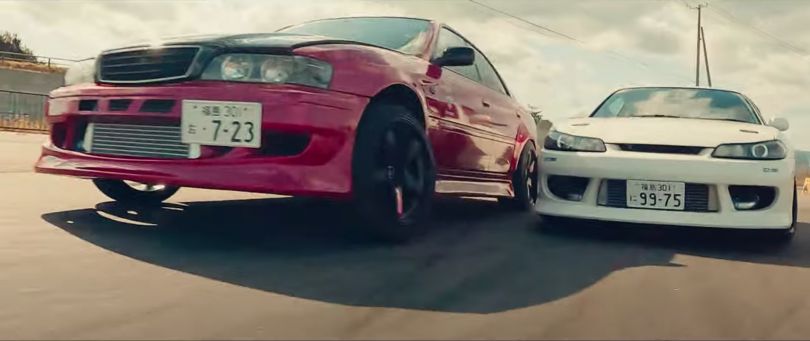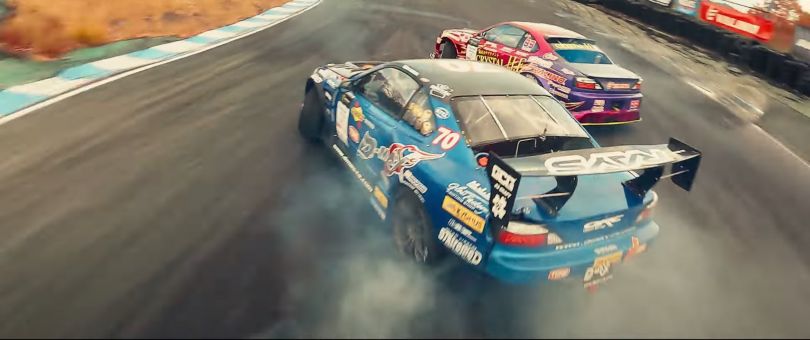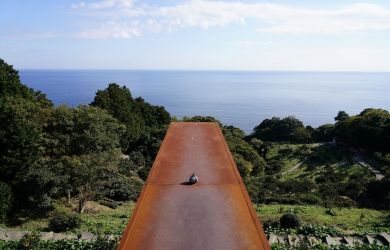
Can a video game teach someone how to be a physical athlete? Until recently, the answer to such a question would be obvious. The once-firm boundaries of reality find themselves increasingly challenged in today’s world with the rise of Esports and the average consumer’s ease of access to high-level simulation technology.
Professional pilots have been using expensive simulators for decades to train before placing their even-more-expensive aircraft at risk. Now simulators can be had at a much lower price point, opening up opportunities for athletes to use them for practice.
Ten Shimoyama’s newest film, “Alivehoon,” recognizes this in the sport of drifting’s first major film.

The main character, Koichi Oba, played by Nomura Shuhei, is a socially-challenged introvert struggling at a low-paying factory job during the day and Japan’s fastest gamer by night.
One day a girl shows up at his place, conveniently surprising him while he’s sleeping in his boxers, and offers him a chance to drive a real car. He incredibly awkwardly accepts, and they hop into her highly customized drift car, and off they go.
“Alivehoon” is a movie that is kind to its viewers. It doesn’t open any existential doubt nor creates an undue amount of anxiety leading up to the climax. It makes a simple promise: a familiar story in a niche setting.
The well-executed and more than a little tropey film feels like watching a shounen anime. With the majority of the target audience for the movie having grown up on “Initial D,” that’s not a bad thing.
All your normal Japanese entertainment character dynamics are present; A relatable protagonist hiding a powerful skill, a love interest, an easy-to-hate antagonist, a rival and an older father figure with real-world stressors who eventually grooms the main character into the tire-shredding monster we all want him to be.
This familiarity allows it to appeal to car enthusiasts and people who identify cars by color.
If you’re not aware, “drift” is a sport where cars drive sideways at high speed, competing for technique points. Usually, they will go in pairs, with each driver taking a turn as the lead car.
The lead car scores points by putting on a show of technique at high speed, and the chase car scores points by mirroring the lead car as closely as possible.
Filming racing cars isn’t easy; it’s time-consuming, expensive and heavily skill-based, both for the drivers and the production crew. Most blockbuster movies use computer-generated graphics and green screens for car scenes. You can get a higher quality product at a lower price point. However, they often pay for these savings by sacrificing authenticity. Here’s looking at you, Fast and Furious.
That’s where “Alivehoon” stands out.

For those who follow the sport, it won’t be surprising to hear that the Drift King himself, Keiichi Tsuchiya, had a guiding hand in this movie. It’s primarily due to his influence that the Japanese cars are all driven by real Japanese drifters and filmed with real cameras, on actual courses – even the crashes.
“The key point with this movie is the fact that we used real cars, doing real drifting, and no C.G.,” Tsuchiya says.
Before they could film anything, the drivers had to give the camera crew a taste of what they were in for, so they got some free ride-alongs with professional drifters. One can only hope there are reaction videos preserving those moments for history.
“When we rode along with Naoki Nakamura-san, we quickly realized we would not be able to film this movie as we normally do,” says Koshi Kiyokawa, director of photography for the film. “So we had to come up with creative ways to film the cars.”
This means putting expensive equipment at risk. Kiyokawa said they lost five drones and ten cameras during filming. Creative costs, as it were.
As far as movies go, the plot itself isn’t inspirational, but what makes it relevant is that this is not an unrealistic opportunity.
Formula 1 started scouting drivers from the ranks of Esports teams half a decade ago, shocking the world of motorsport. Perhaps more shocking was that they were successful. These weren’t genius protagonist hires mind you, but they weren’t bad financial investments either.
Drifting is surging into its second generation of athletes and many new pros learned to drift on a video game or simulator. The now well-established sport is slowly but surely leaving its grassroots legacy behind in favor of groomed elites.
Is it possible that a sport whose identity has been the garage mechanic down the street could shift to something as clean and polished as Formula 1?
If sims and games prove to be valuable tools, it could mean recruiting an ocean of talent that otherwise never would have had the opportunity to learn due to initial costs.
“With this movie, I want to inspire children to dream of drifting,” Tsuchiya said.
So the foundational concept of “Alivehoon” isn’t inherently unreasonable, but it’s safe to say you can’t give a pro gamer with no driving experience a steering wheel and put them on track with the world’s best. It’s just not that simple.
Impressive filming and incredible drivers aside, if you’re looking for a movie that will make you ponder the meaning of your existence, this isn’t it. “Alivehoon” is purely entertainment. There’s no deeper meaning here. It’s the pizza potato chip of the movie aisle — cheesy and delicious.
So go on, have a snack. You deserve it.
“Alivehoon” was released on June 10 in Japan and scheduled for international release in select countries next year.







